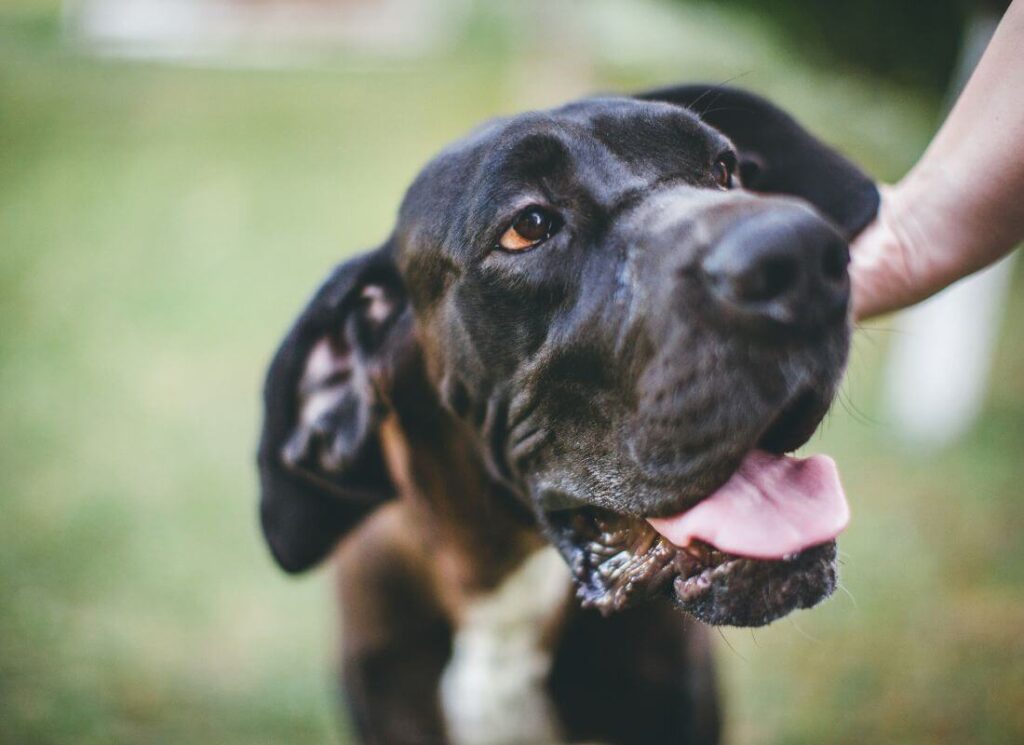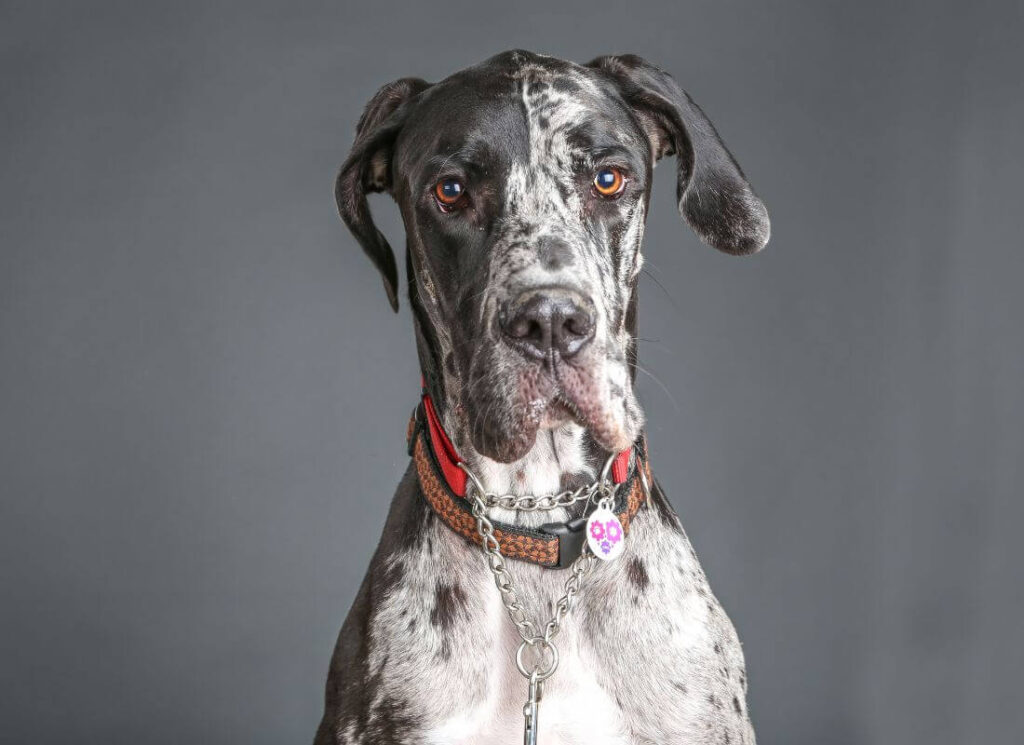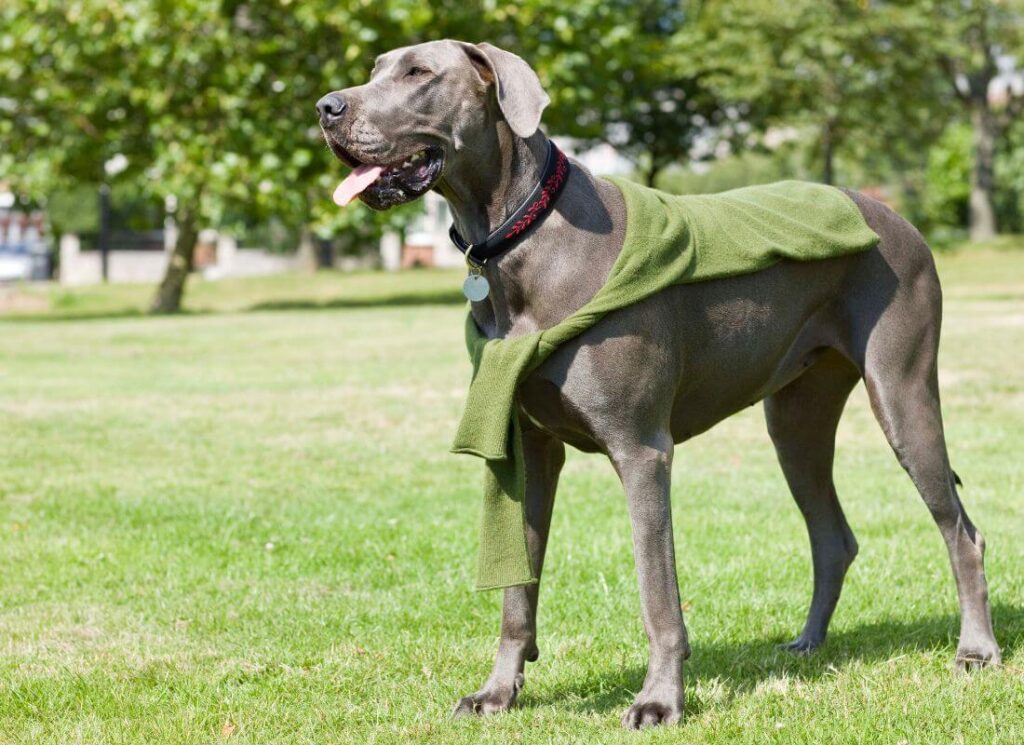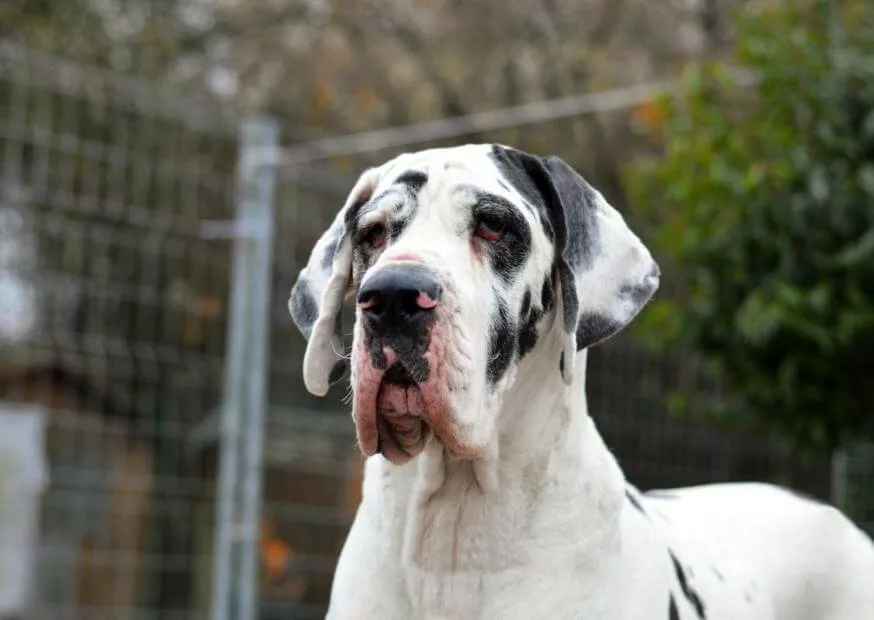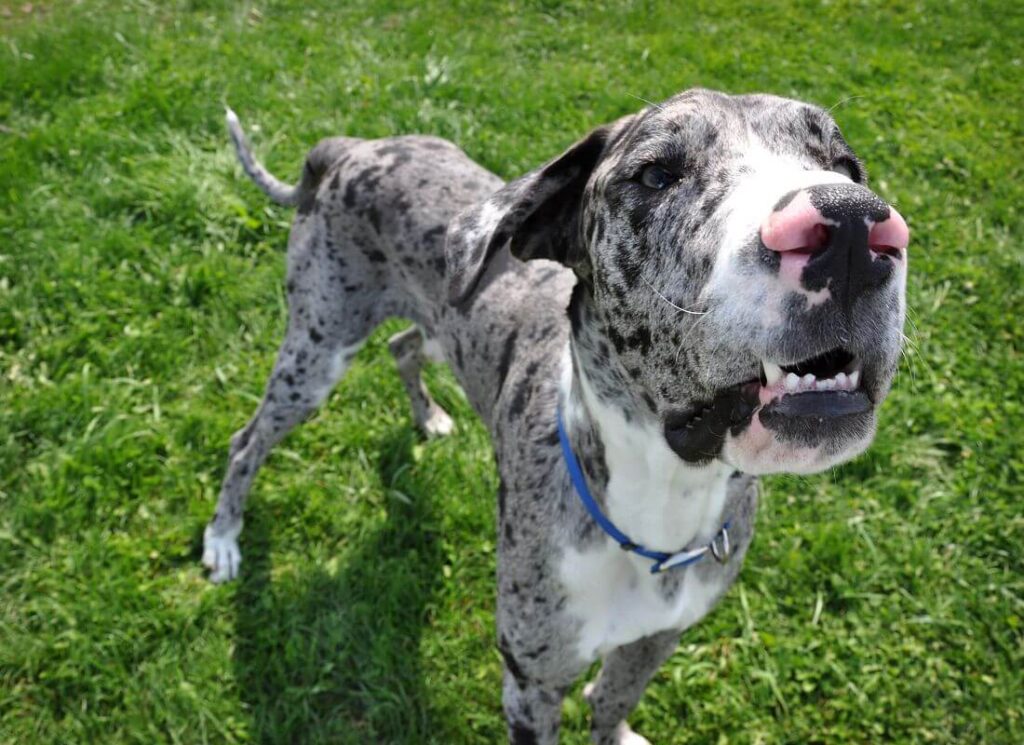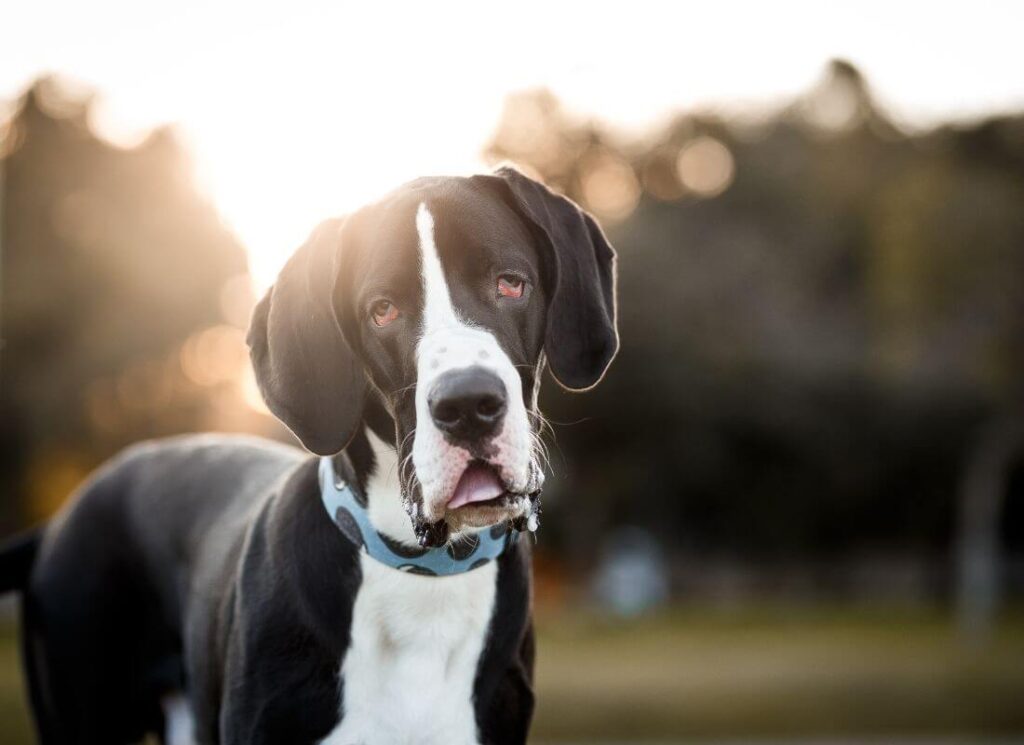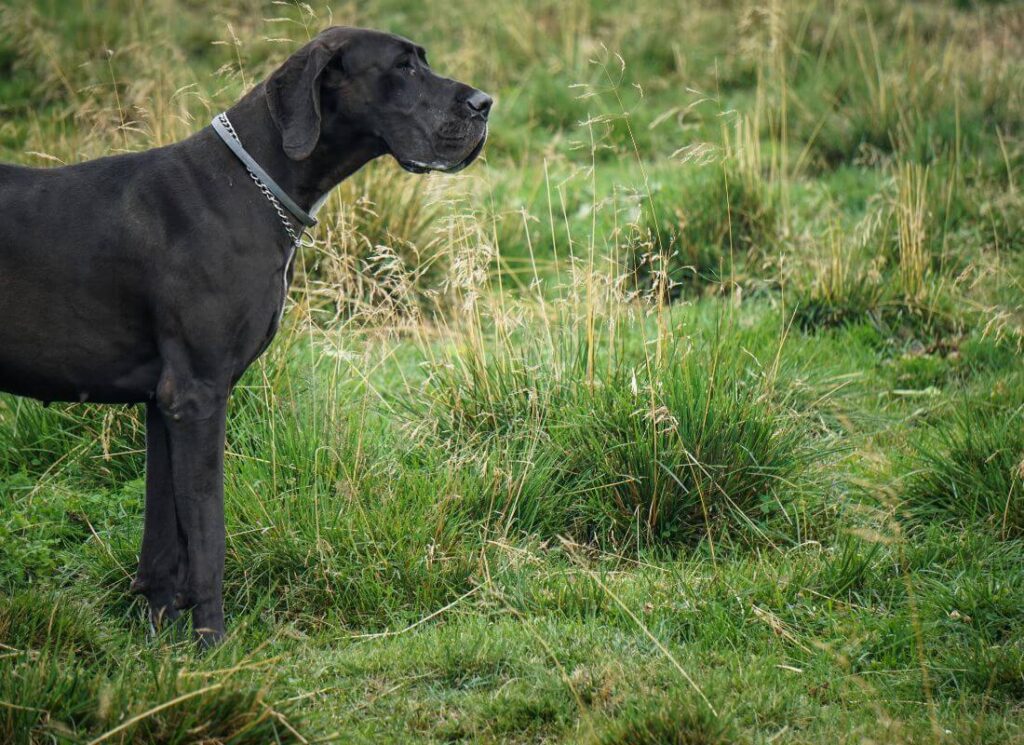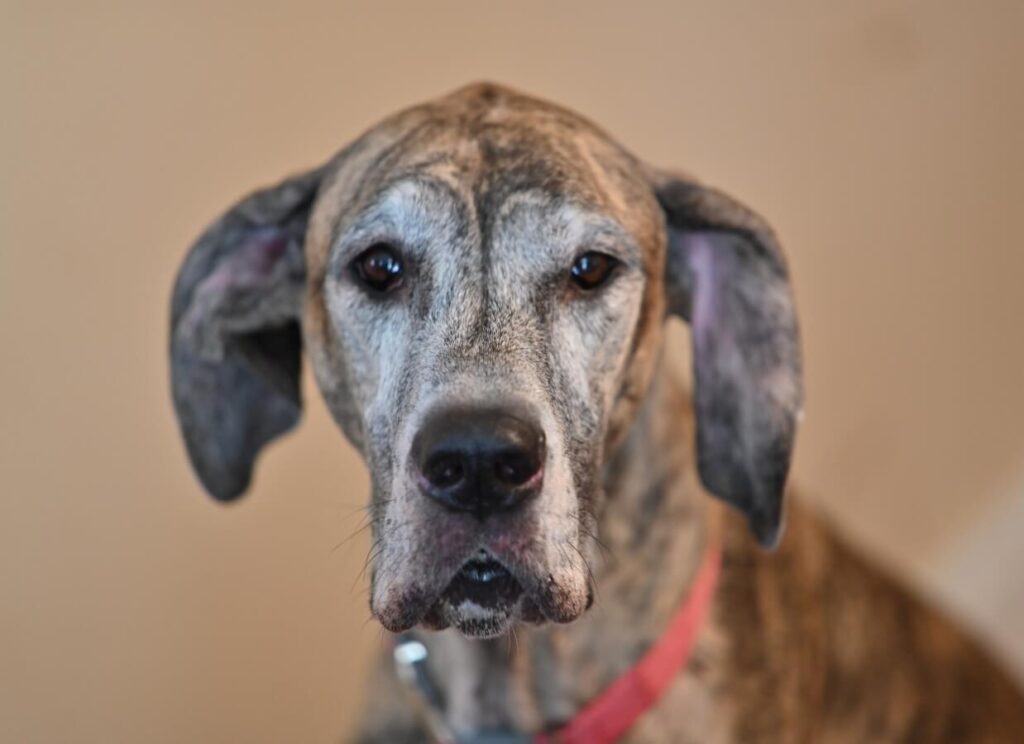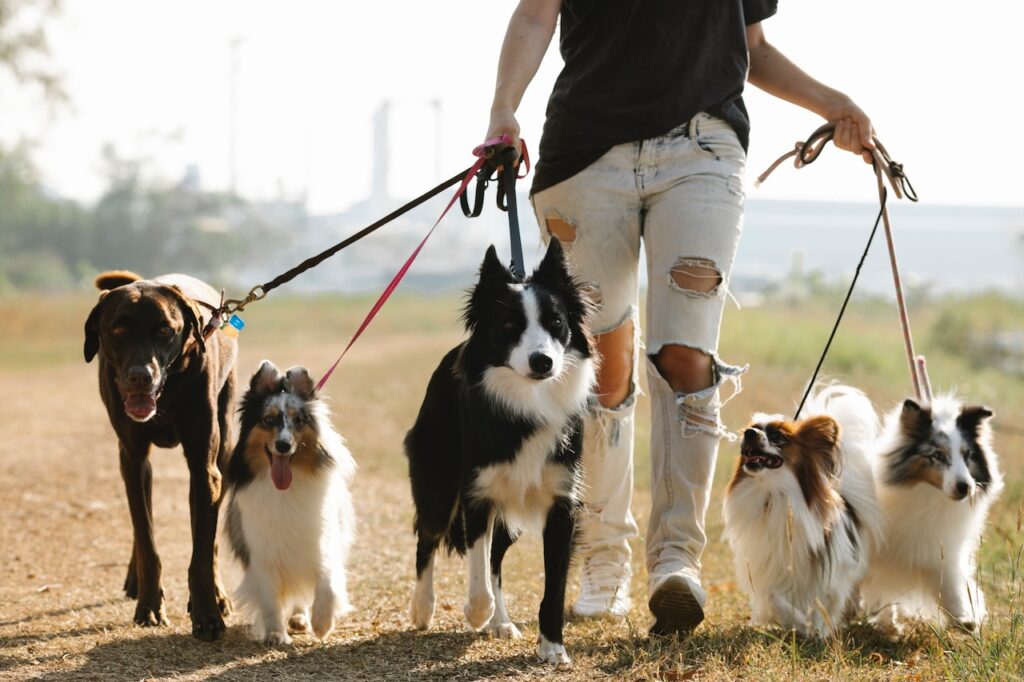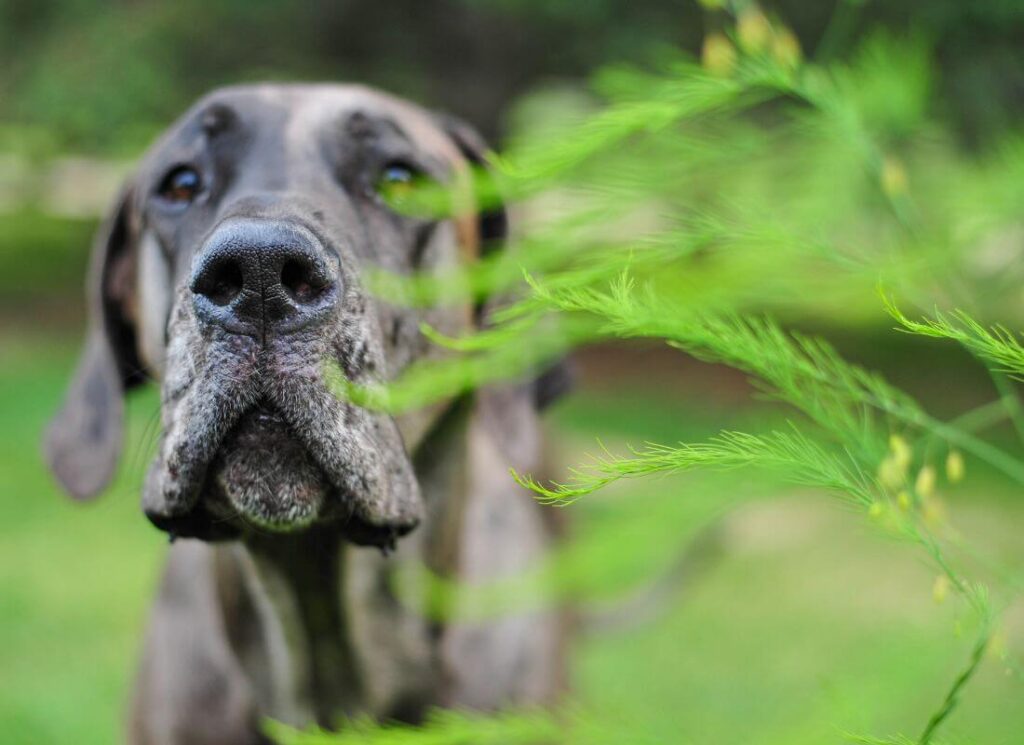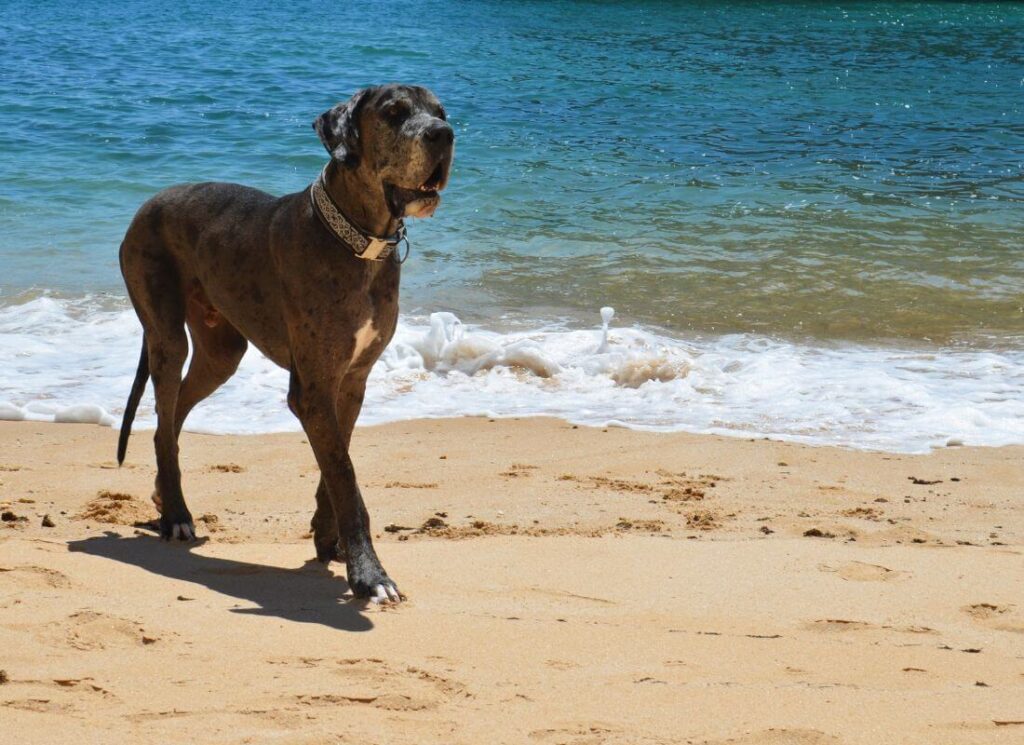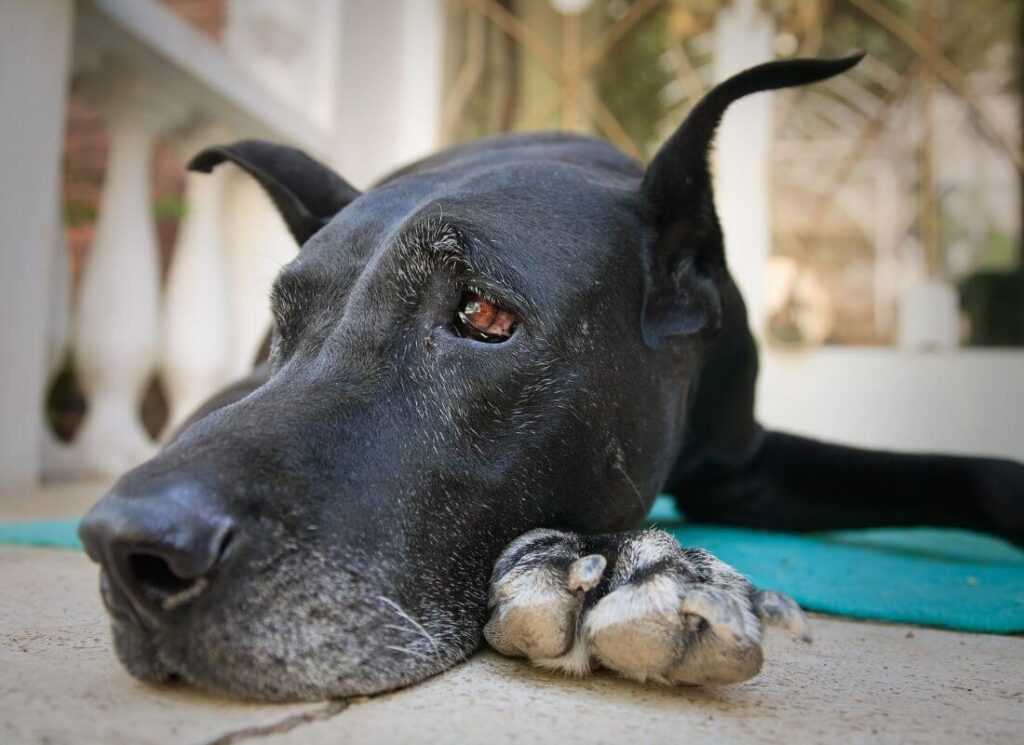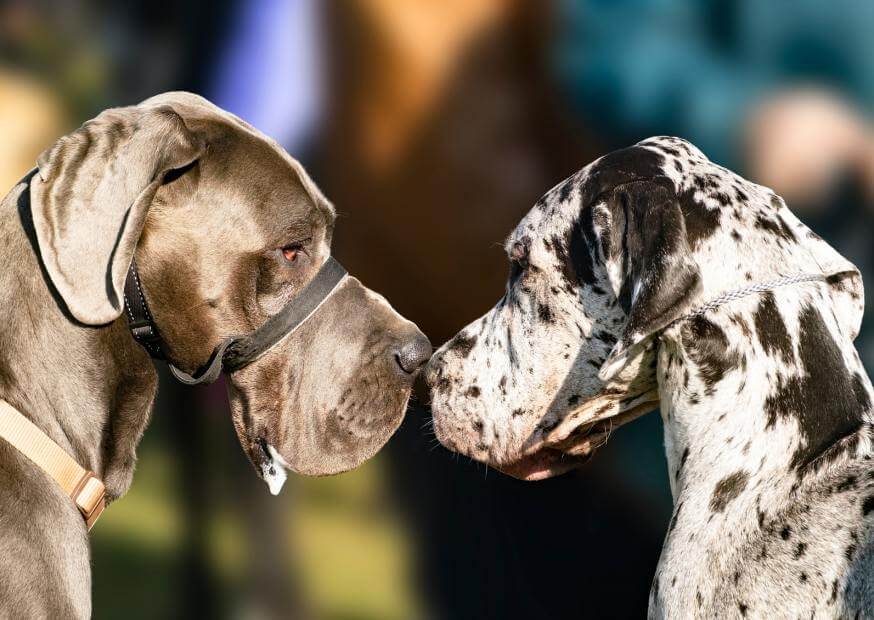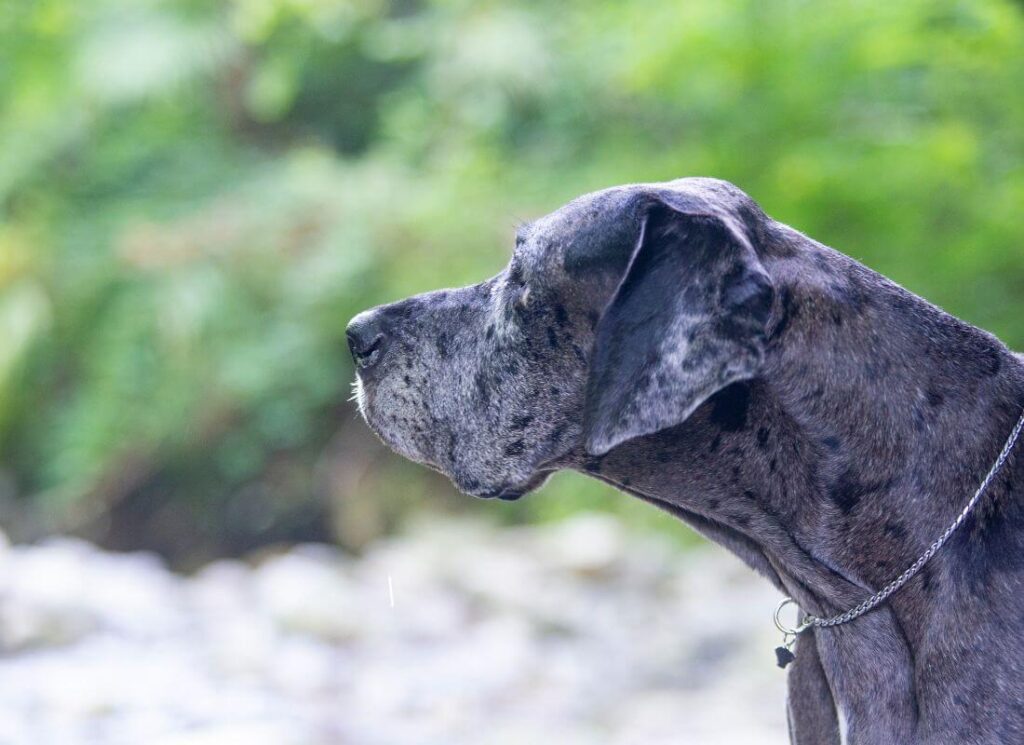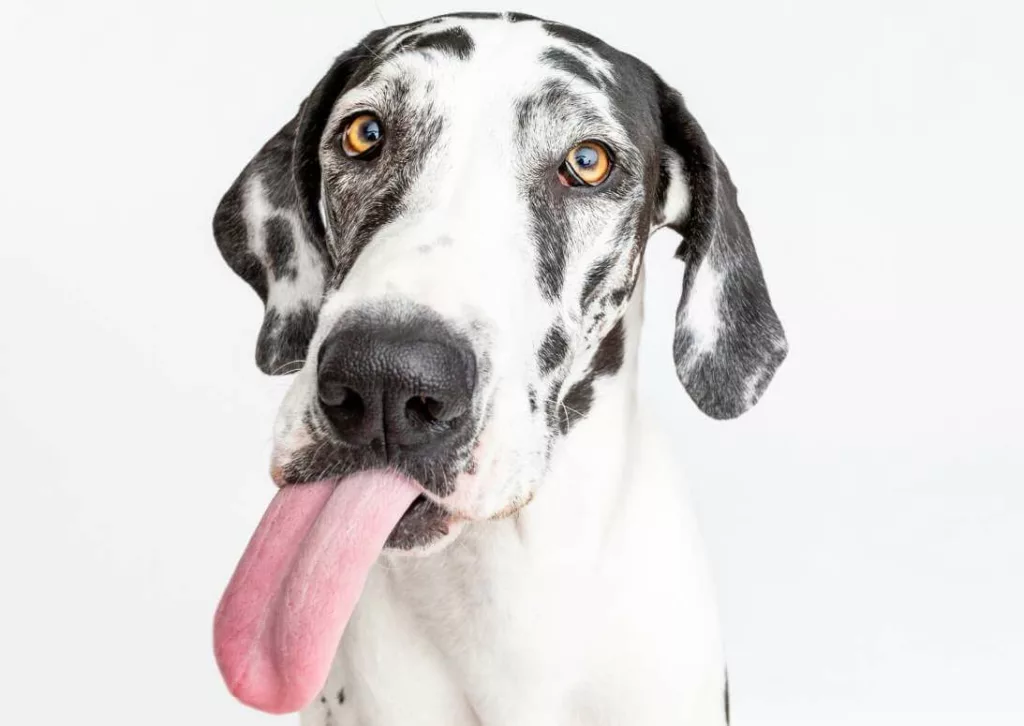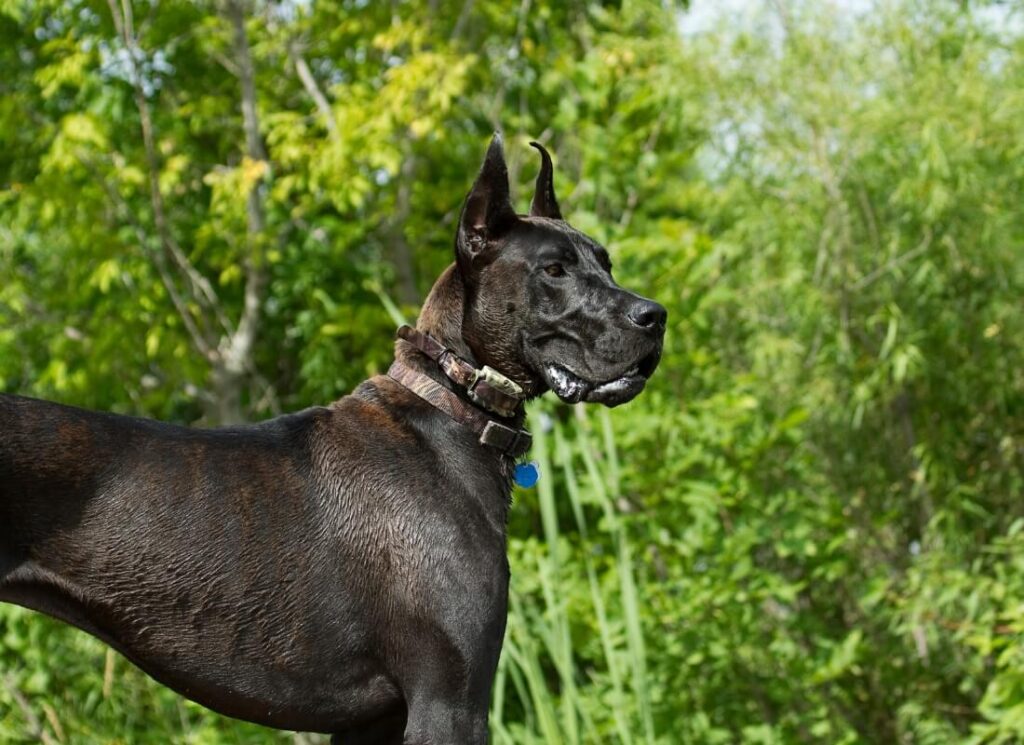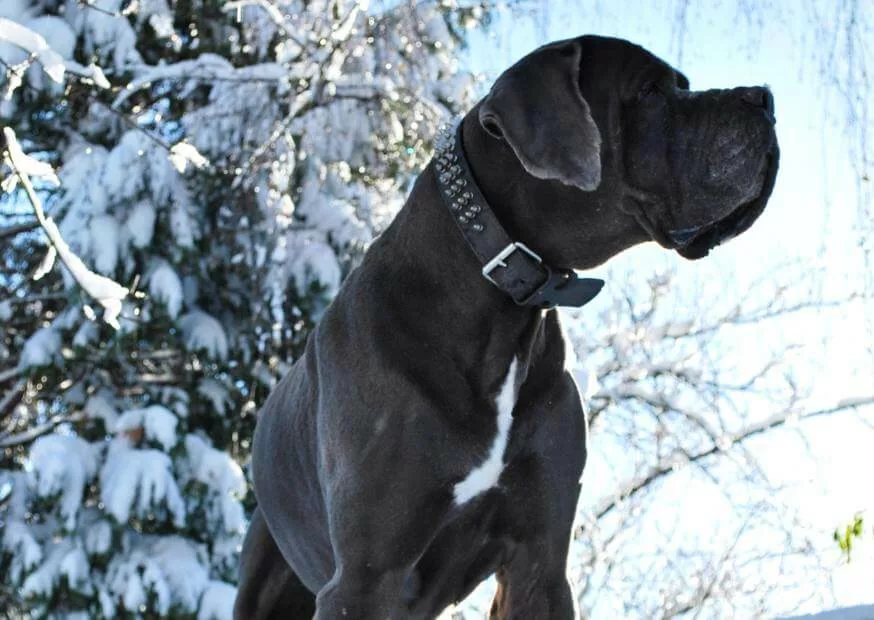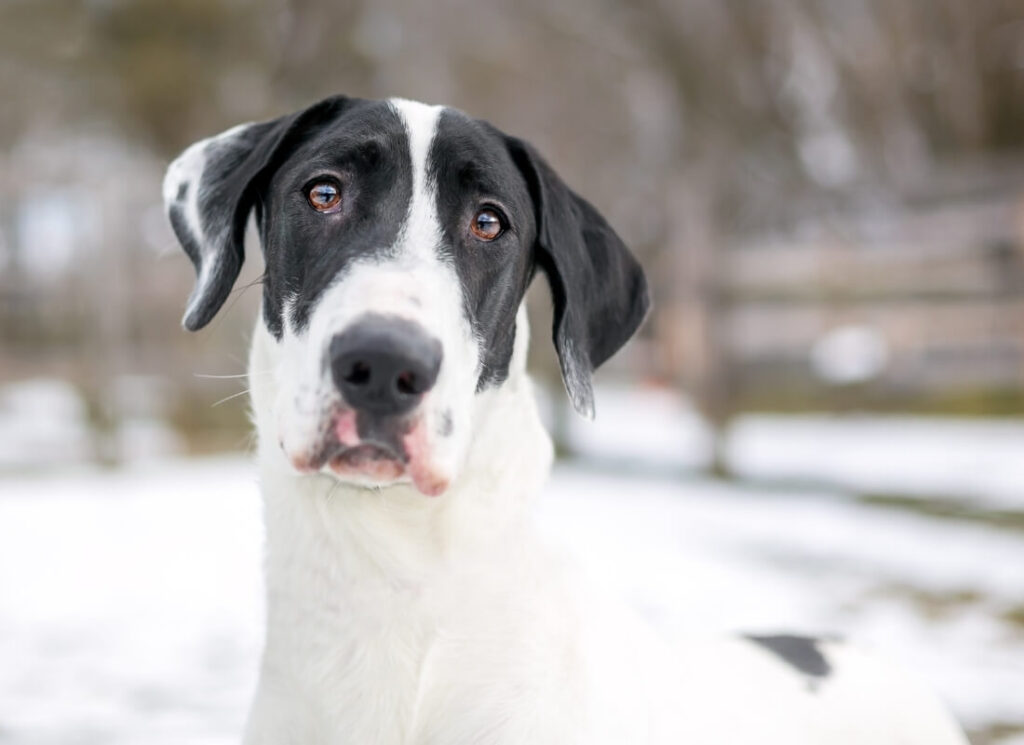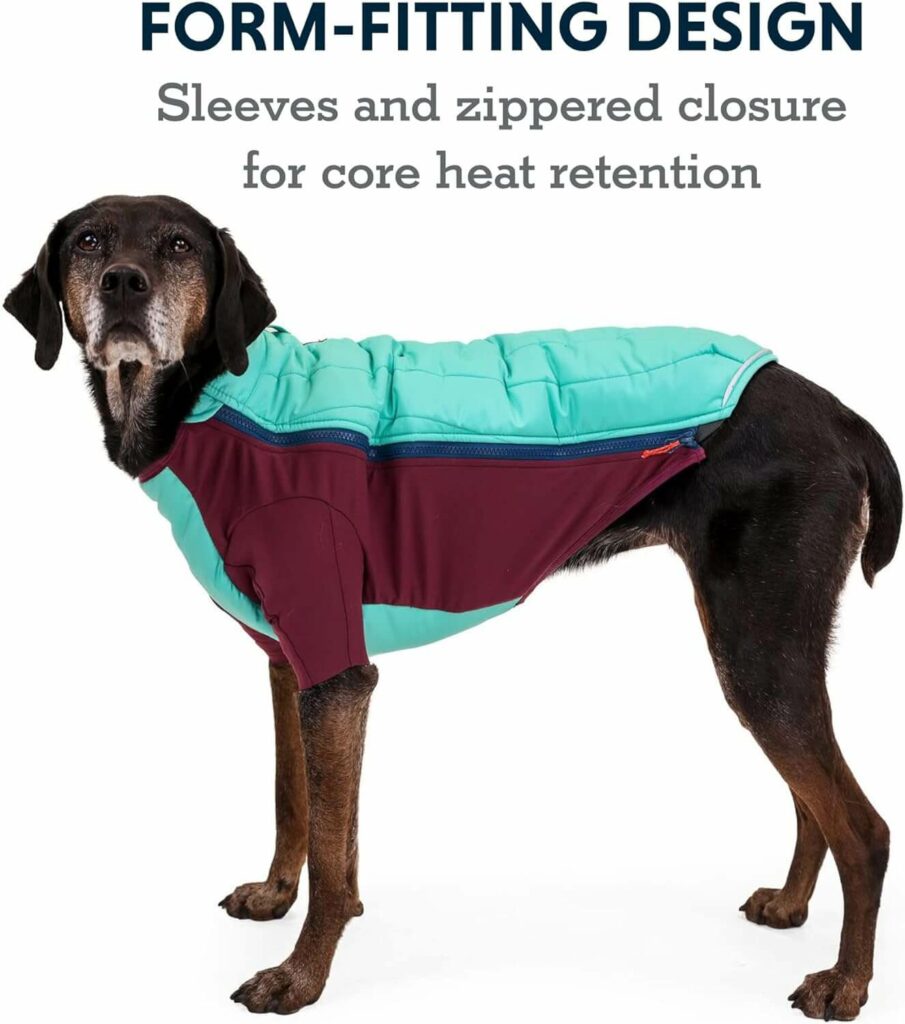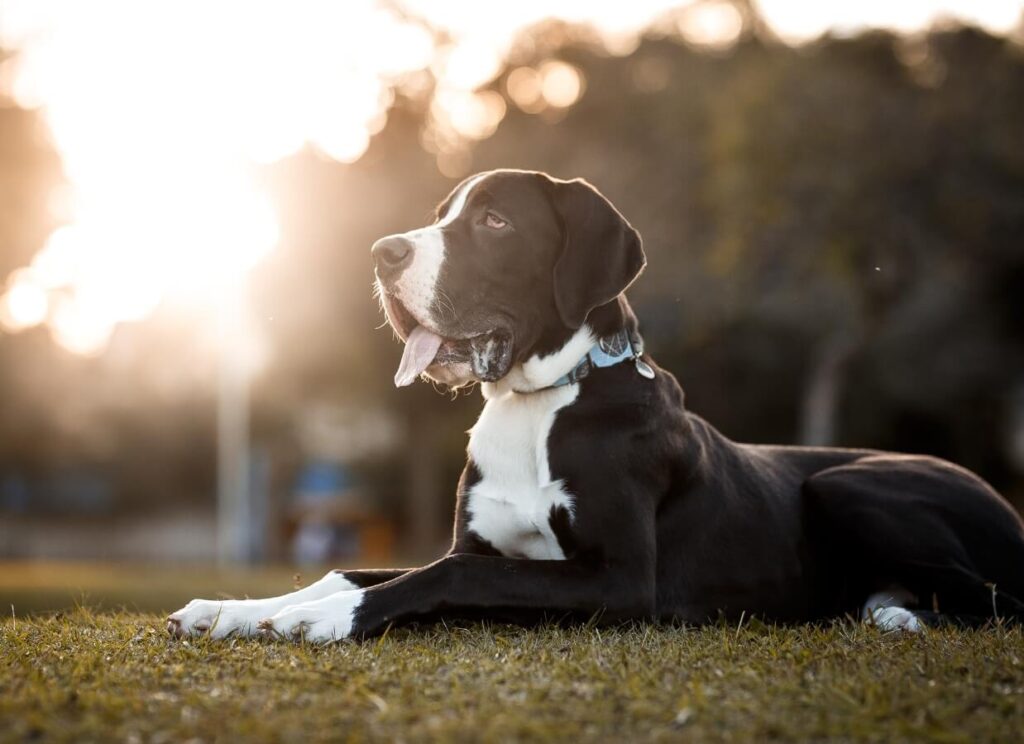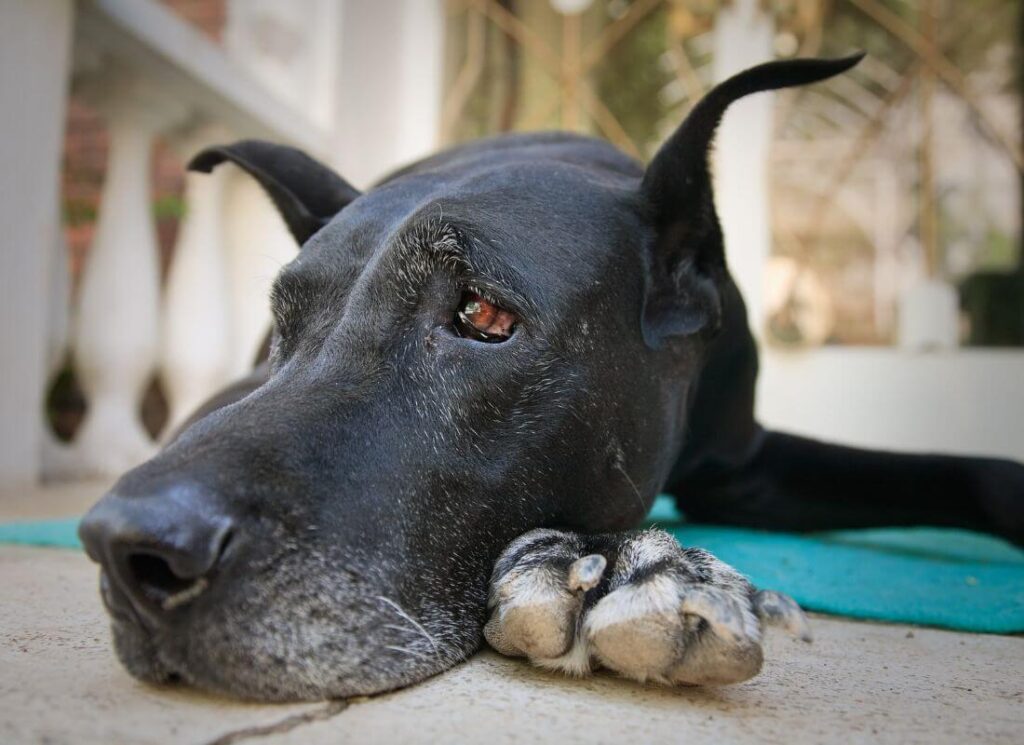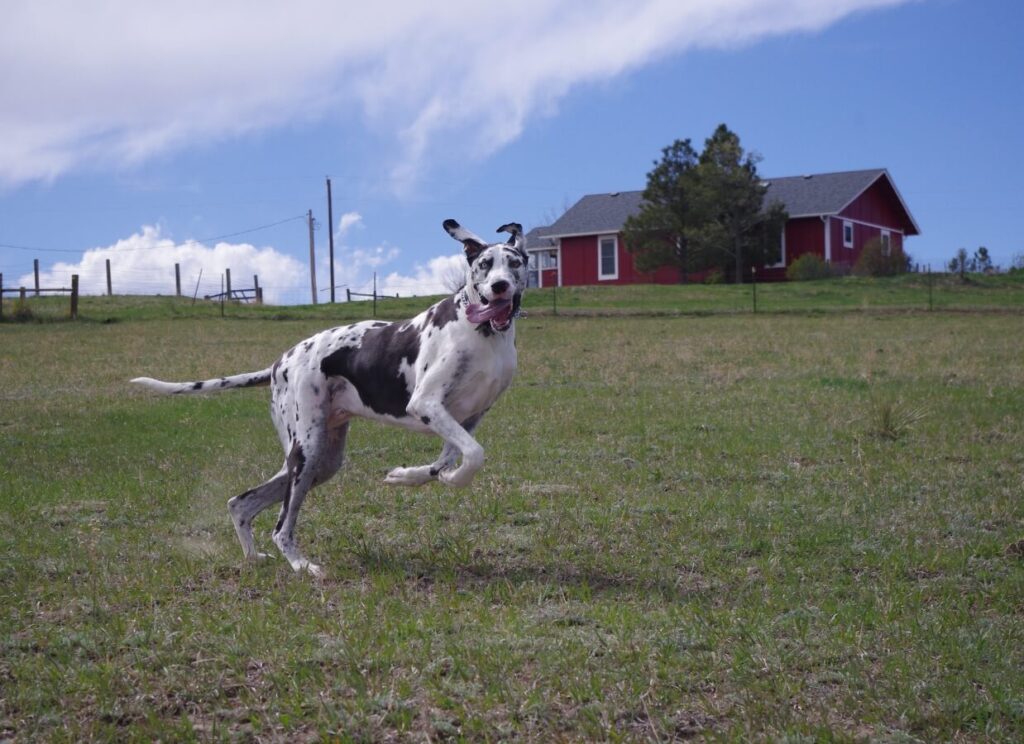In the world of puppy care, the practice of giving vitamin C to treat knuckling or carpal laxity has been a long-standing tradition. However, some veterinary journals suggest that this practice may be outdated and potentially harmful. This article aims to provide a thorough examination of the history, pros and cons, dosing information, and recommendations for pet owners considering vitamin C supplementation for their puppies.
This blog is especially important for those who own large or giant breed puppies such as Great Danes, as they are particularly susceptible to growth disorders affecting their orthopedic structure for life!
In this blog we will discuss:
- Vitamin C as a treatment for puppy knuckling
- The health benefits of Vitamin C for puppies
- New research on bone health and optimal nutrition
- The cons of giving Vitamin C to puppies
- Which form of Vitamin C to choose, if you use it
- Vitamin C dosing for Puppies

Are Vitamin C Supplements Beneficial for Puppies?
A quick Google search turns up countless blog posts on this topic, but few answers are backed by legitimate science and research.
The tradition of administering vitamin C to puppies stems from a belief in its potential benefits for joint health, particularly in large and giant breeds. Vitamin C plays a key role in collagen production and may play a supportive role in joint health. Proponents also believe that it can boost the immune system and act as an anti-inflammatory.
To further understand if that is beneficial, it’s helpful to know how Vitamin C works for dogs in the first place.
Dogs synthesize Vitamin C in their liver, all on their own, creating around 18mg of Vitamin C for every pound of their body weight.
In other words, it is extremely unlikely for a dog to be deficient in Vitamin C, because they make it themselves.
Can Dogs Get Scurvy?
Scurvy is a condition caused by a deficiency of Vitamin C, which plagued pirates and travelers who spent extended periods at sea without access to fresh fruits and vegetables.
The link between citrus fruits and scurvy prevention in humans was discovered in the 18th century by James Lind, a Scottish naval surgeon.
While it’s theoretically possible for dogs to experience scurvy, the likelihood is exceedingly low, thanks to their natural ability to produce vitamin C without relying on dietary supplements. In this way, dogs and cats differ from humans!
If a dog is suffering from symptoms that mimic or could be scurvy, veterinary diagnostics are needed to sort out the root cause of the deficiency.
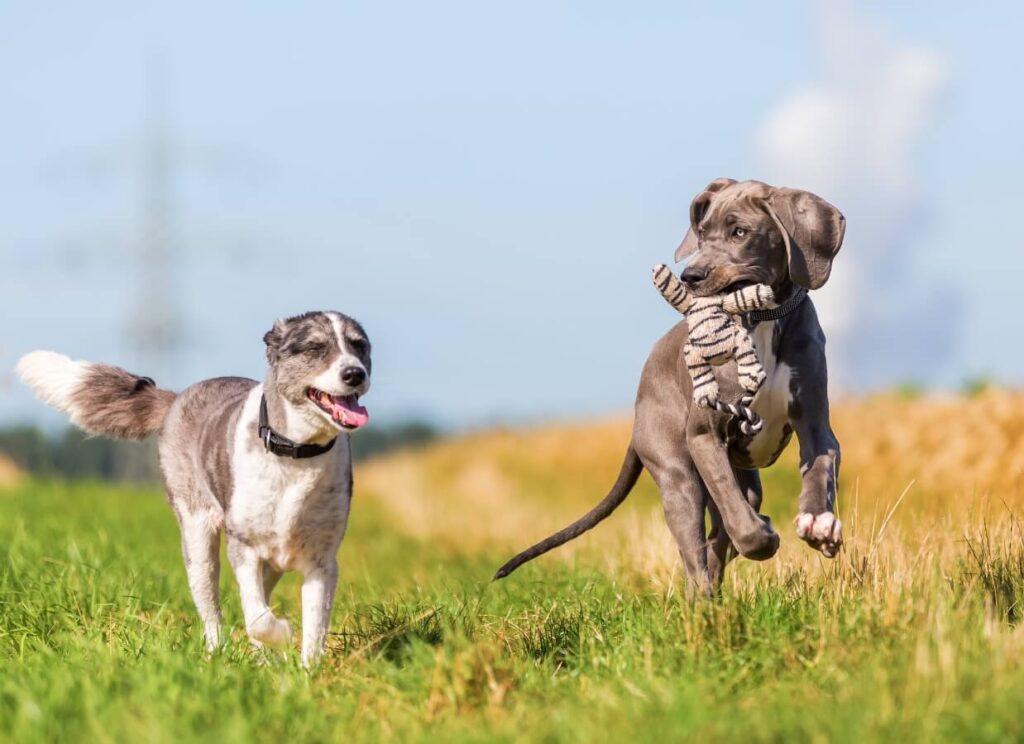
Carpal Laxity Knuckling and Vitamin C Supplementation
Many pet owners administer vitamin C to their puppies with the belief, rooted in the practices of breeders and fellow pet owners, that it can prevent or even address the issue of puppies knuckling over.
Carpal Laxity, commonly known as “knuckling over,” occurs when a puppy undergoes rapid growth that outpaces the development of muscles, ligaments, and tendons. Consequently, the feet may either knuckle over or lose support at the ankle and toe joints and fall flat.
This condition is understandably alarming to pet parents! It can also be common, especially among young large and giant breed dogs during their explosive growth stages.
Breeders and enthusiasts frequently recommend Vitamin C as a preventive or treatment measure for this condition. However, the question remains: is this practice genuinely beneficial, or is it rooted in anecdotal beliefs?
I’m not convinced it’s something we should be doing for every dog. It may be a harmful practice! Let’s dive into this.
The Dangers of Over-Supplementation in Pet Diets
Excessive supplementation in pet diets poses significant risks to the health and well-being of our furry companions.
While certain vitamins and minerals are essential for their proper growth and development, an overdose can lead to adverse effects. Over-supplementation, whether intentional or unintentional, may result in toxicity, causing symptoms ranging from digestive issues to more severe complications such as organ damage.
While some argue that over-supplementation merely leads to “expensive pee,” the reality is that at times it can translate to costly veterinary bills.
For example, there is a reason that excess vitamin D in pet food has resulted in multiple recalls from pet food companies (including Hill’s, Fromm, Simply Nourish, and others). Excess vitamin D is toxic to dogs.
Just because something is “natural” and sounds healthy, doesn’t mean that it is.
Is Too Much Vitamin C Toxic For Dogs?
Vitamin C does act as an ANTI-oxidant. Antioxidants prevent cell damage, and that’s a wonderful benefit.
However, according to the veterinarians at Tufts University, excess Vitamin C (too much of it) will have the opposite effect.
When given in large amounts, Vitamin C can become a PRO-oxidant! Instead of fighting oxidation, it begins to promote oxidation and thus, lead to cell damage.
(Read more about Vitamin C and cell damage in this article from Tufts University HERE).
What I’m trying to get at here is that the blind practice of giving large and giant breed puppies Vitamin C as a “preventative” may be misguided and worse, damaging.
Of course, one data point on this topic isn’t enough. I want to see the research! So I dug some more.

Cons of Vitamin C for Puppies Joint Health
In my research, I found four additional problems with giving puppies high levels of vitamin C!
Calcium Oxalate Stones
When the body has an abundance of vitamin C, it metabolizes into oxalate, a compound that, when combined with calcium, can lead to the development of these stones in the urinary tract.
Calcium Oxalate Stones pose a serious health concern for dogs, as they can obstruct urinary passages, causing discomfort, pain, and potential complications.
Chronic Loose Stools & Digestive Upset
When provided more than their body needs, abundant vitamin C can irritate the gastrointestinal tract, leading to symptoms such as diarrhea, stomach discomfort, or vomiting.
Advocates for providing puppies with high levels of vitamin C often suggest resolving potential digestive issues by dividing the dose across multiple meals. Yet, considering the inherent sensitivity of puppy stomachs and the prevalence of chronic digestive problems in many young pups, one may question the wisdom of this practice.
A lot of pet owners modify their puppies’ diet and incorporate various home remedies into their food to address persistent loose stools and stomach upset. In many of these cases, the culprit behind these issues might have been Vitamin C.
Excess Calcium in the Blood
Here is where things become sticky. Science tells us, without question, that excess calcium is damaging to puppies’ bones and joints as they grow. Calcium is an incredibly important mineral that is necessary for bone growth and health, but too much is devastating.
Large and giant breed puppies should receive no more than 3.5g per 1000 kCal of calcium in their diet. For most foods, that means the calcium needs to be at 1.2% or less, with phosphorus closely matched.
Studies have shown that puppies with an excess of calcium in their bloodstream are highly prone to developing profoundly abnormal joints as they grow.
One study showed that giving Ascorbic Acid to puppies that were suffering from HOD (hypertrophic osteodystrophy) correlated with an increase in their calcium levels.
For puppies already experiencing the effects of over-nutrition and high calcium from their diet, vitamin C made it worse.
Overnutrition and Rapid Growth
Rapid growth and hasty bone modeling are significant indicators of potential orthopedic issues in large and giant breed puppies. The long-term effects of their puppy diet become evident, particularly in adulthood.
It’s logical to assume that doubling or even tripling the quantity of a specific nutrient in the diet can lead to issues. The intricate process of tissue, bone, cartilage, and tendon creation is highly susceptible to negative influences when the body receives improper nutrition.
Amino acids, vitamins, and minerals all play pivotal roles in the functions of growth, bone mineralization, and modeling. What’s more, they all work together. Some cannot function without the other.
Excessive amounts of any of these key elements may have adverse effects, no matter how ‘nice’ and ‘harmless’ a simple nutrient (such as vitamin C) may sound.

Do Puppies Excrete Excess Vitamin C?
Faced with this information, many individuals argue that animals, including humans, will excrete the excess Vitamin C through urine, suggesting that over-supplementation poses no problem.
The belief here is often guided by the notion of “no harm, no foul.” This notion is often reinforced by the anecdotal favorite response of “Well, my dogs were given this, and they are perfectly fine.“
While it’s true that some portion of the excess is eliminated through urine, particularly for vitamins with low bioavailability that won’t be effectively absorbed or utilized, we must acknowledge that over-supplementation has been proven to cause certain conditions.
This raises the question of “when is it too much?”
Irrespective of the dosage, there are established conditions linked to the excessive intake of vitamins, even those considered “safe”, like vitamin C.
Every pet owner should conduct a risk-benefit analysis to ensure informed decision-making.
If over-dosing could easily lead to cell damage, urinary stones, and an excess of calcium in the blood, it raises questions about whether Vitamin C is as beneficial a supplement as it was once believed to be.

Does Vitamin C Prevent Hip Dysplasia in Dogs?
The role of Vitamin C in preventing hip dysplasia in dogs is not conclusively supported by scientific evidence.
I’m sorry to say, but it just isn’t. There are thousands upon thousands of veterinary studies, journals, and research out there and there isn’t anything supporting the use of Vitamin C as a preventative for hip dysplasia or any other bone growth disorder.
Genetic factors, nutrition, and proper care play crucial roles in hip dysplasia prevention.
Similar to most bone growth disorders such as Panosteitis, knuckling over, HOD, Retained Cartilage Cores, etc., the development of these conditions is frequently influenced by excess calcium and over-nutrition.
Hip dysplasia is genetically linked, and dogs with a predisposition are potentially at an even greater risk when exposed to preventable environmental factors.
In my research on Vitamin C supplements for puppies, I’ve discovered that providing excessive amounts may have adverse effects. Puppies given an excess of vitamin C may experience elevated levels of calcium, which can be detrimental. Read more from the Vet Chick, HERE.
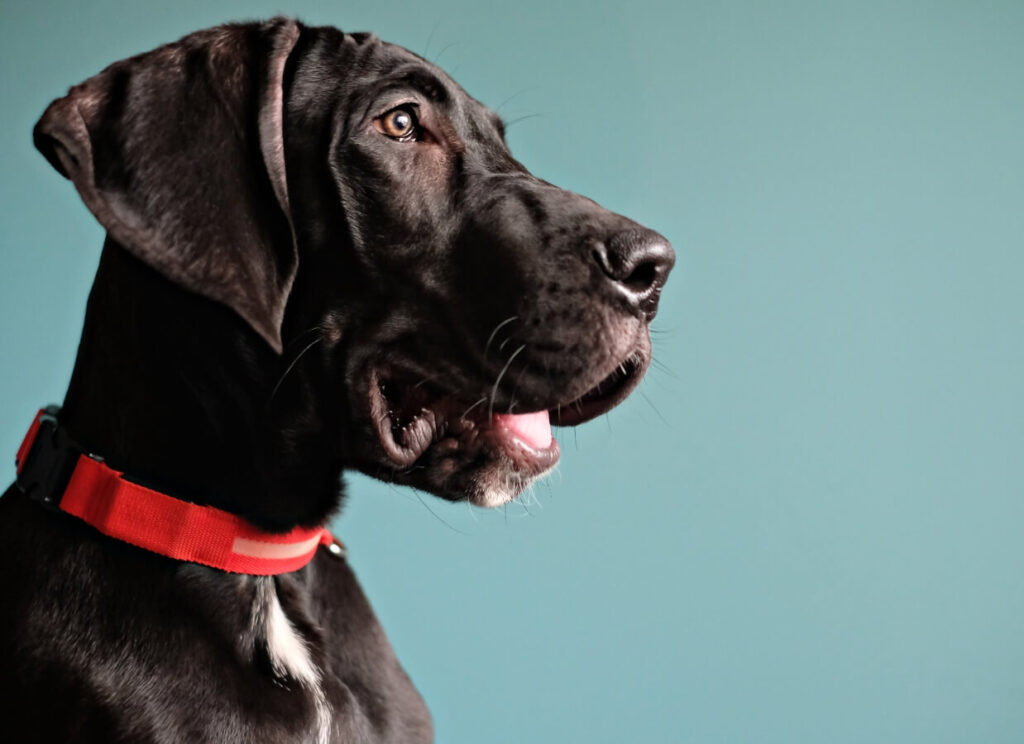
Does Vitamin C Prevent or Treat Knuckling Over in Puppies?
If you’ve made it this far into my article here, you probably realize what I am going to say.
Chances are, no.
Observations regarding the potential effects of Vitamin C treatment on puppy knuckling are anecdotal and rooted in correlation rather than established causation.
For example, if a puppy never experiences a growth problem (such as carpal laxity), a pet owner or breeder may believe that the supplementation of Vitamin C has played a role in its prevention.
In a different example, a puppy exhibiting knuckling over may have shown rapid improvement upon the addition of vitamin C to its diet. It would be easy to believe that Vitamin C had resulted in the improvement.
However, other contributing factors such as alterations in the diet fed, reduced overall stress levels, a better feeding routine, the puppy maturing out of it naturally, and improved practices in caring for the puppy’s joints, likely played a role in the observed recovery.
Considering that a genuine diagnosis of scurvy is highly improbable for dogs, it becomes evident that vitamin C deficiency is not the root cause of the symptoms. If it’s not the underlying cause, the question arises: why is it being employed as a preventative or treatment?
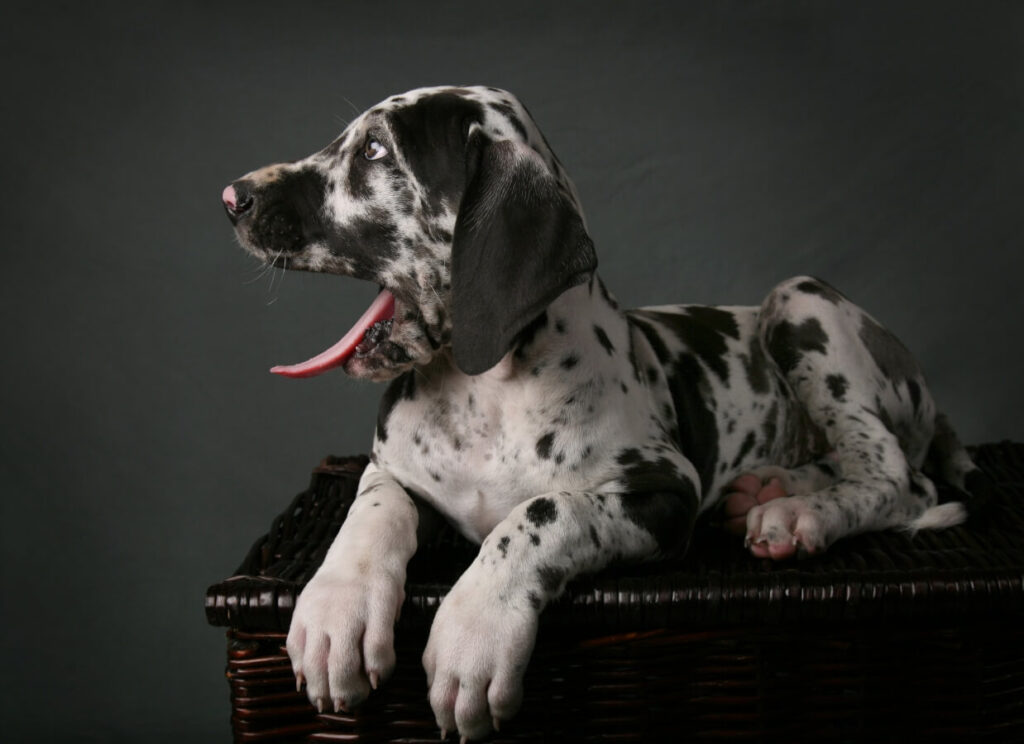
Are There Benefits to Giving Vitamin C to Puppies?
There can be some benefits to vitamin C supplementation, yes!
It is well understood that while dogs make their vitamin C in their livers, their reserves of it may be depleted by stressful events such as extreme exercise (sled dogs and greyhound racing, for example), changes in the home environment (new home, leaving the litter), and medical procedures (including ear cropping).
Nevertheless, since the advantages of supplementing in these scenarios lack conclusive evidence, such practices may serve little more than to provide a sense of reassurance for the pet parent.
It’s important to highlight one study that found giving racing greyhounds vitamin C had the opposite effect as desired. It slowed them down!
For me, the combination of a lack of scientific proof, paired with numerous data points showing the potential problems, makes me question the practice of giving puppies Vitamin C supplements.
With an appropriate diet and adequate care at home or in a veterinary environment, dogs can effectively replenish their depleted vitamin C levels on their own.
Does Vitamin C Prevent Cancer in Dogs
Some research has shown that vitamin C may have a positive effect on cancer prevention and outcomes. However, this has not yet become well understood, nor has it been well replicated in human (or dog) models.
Many researchers speculate, based on their studies, that the role of Vitamin C in cancer prevention will ultimately be disappointing. In other words, it is unlikely to be more beneficial and less harmful than other therapies and treatments.
Practitioners in alternative medicine frequently advocate for the use of vitamins, including Vitamin C, in preventing health conditions, despite limited evidence supporting their effectiveness. It’s not uncommon for them to position things like Vitamin C as a magical cure-all with numerous benefits.
This creates a challenge in distinguishing between factual information and speculation, as opinions within this field often diverge and contradict each other.
While Vitamin C may have some potential benefits in cancer prevention, it’s important to recognize that it’s unlikely to be a miraculous cure-all.
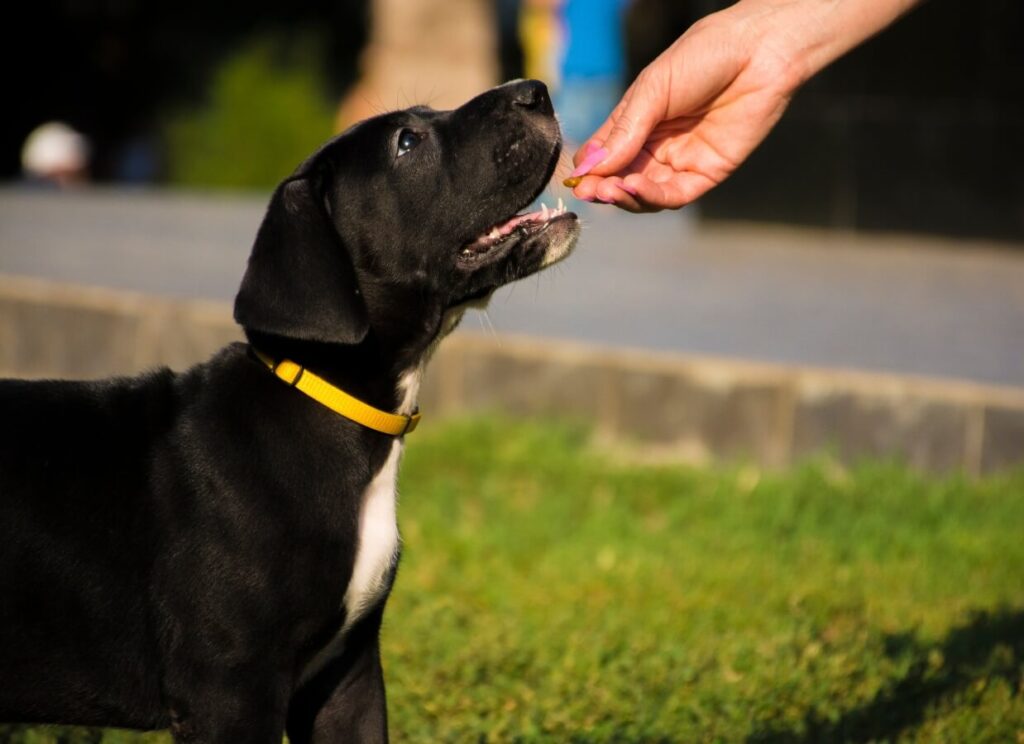
What is the Best Form of Vitamin C to Give Puppies?
The best form of Vitamin C for puppies is a nutritious diet.
I’m not kidding! If you are feeding a well-balanced, nutritious diet formulated for large or giant breed growth, that’s all your puppy needs. (For information on recommendations for feeding large and giant breed puppies, read here).
If you want to provide nutritious foods that contain vitamin C, consider offering fresh, whole foods as a boost instead of commercially available Vitamin C supplements. Adding fresh foods to the diet can have other benefits, too, such as increasing fiber intake and reducing the risk of bloat.
Some examples of dog-safe foods that contain vitamin C include:
- Carrots (like these fiber-boosting Olewo Carrots)
- Pumpkin (canned or fresh!)
- Sweet Potato (I love to give my dogs dried sweet potato chews!)
- Blueberries (Wyman’s sells a huge bag of wild blueberries that are delicious for humans and pets)
- Fish (like these dried salmon treats)
- Yogurt (plain), just watch the extra calcium
Remember to keep healthy toppers like this to less than 10% of the diet, or less than 5% of the diet if under the age of 8-12 months.
This is important because your pet needs balanced nutrition to support their overall health; too many extras can cause problems with the intake of other important nutrients, amino acids, and minerals.

Final Verdict – Is Vitamin C Beneficial?
I don’t think it’s the most harmful practice, but I’m not convinced it’s necessary or truly helpful, either.
Having now read some of the actual research in-depth myself, I will not be giving Vitamin C supplements to future puppies. Many veterinarians would agree with me; a lot of them consider this practice outdated and without merit.
Millions of people have given their big pups up to 1500mg/day of Vitamin C and seem to have suffered no ill effects. However, how can we know for sure? We don’t, and that mystery is what gives me pause.
Depending on the pup’s current weight at dosing, 1500mg can be 2-4x what their body produces, and needs, naturally.
The form of Vitamin C used can affect how much is used in the body, too. Esther C is commonly seen as the most bioavailable form; however, it includes calcium. We know unnecessary and additional calcium in the diet is damaging.
In assessing all of that, I’ve come to realize that it may just not be worth the money or the potential risk. We have no legitimate or scientific proof that Vitamin C supplements do much at all to help with certain conditions (such as knuckling over and dysplasia) and plenty of proof that it may be harmful.
Do you believe that large and giant breed puppies should always receive vitamin C supplementation in their diet? Leave a comment below!



